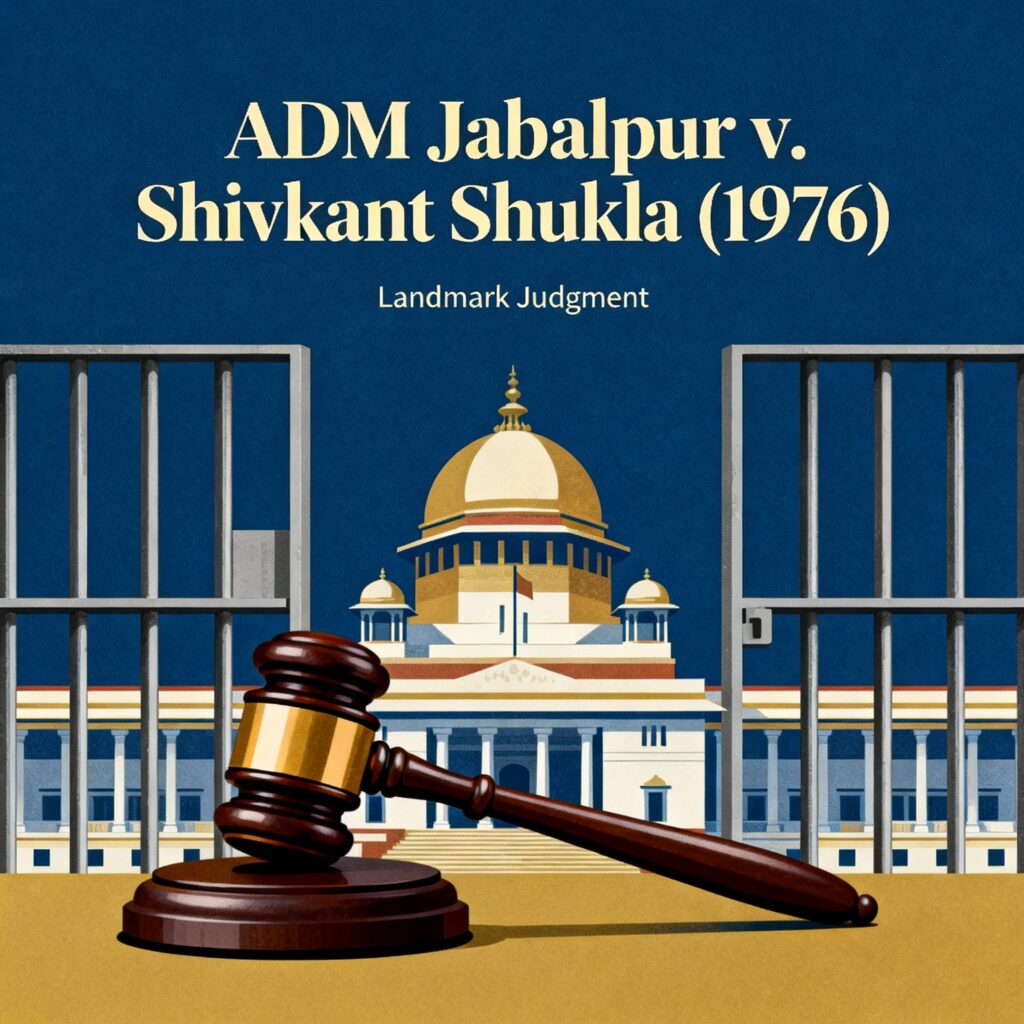Published On: August 19th 2025
Authored By: Tanya
New Law College, BVDU, Pune
ABSTRACT
The inauguration of the Bharatiya Nyaya Sanhita replacing the Indian Penal Code, the Bharatiya Nagarik Suraksha Sanhita replacing the Code of Criminal Procedure and the Bharatiya Sakshya Adhiniyam replacing Indian Evidence Act has provided India’s criminal justice system with profound reform. The objectives of the reform are victim-centric justice and efficiency. In particular, there are concerns about gender-neutral terminology, forensic examination, community service, and the utilization of device-based technology such as online communication and Zero FIR’s. While there are new problems such as police abuses or incomplete prescribing regulations, these new reforms may represent a more responsive and equitable judicial system. Thus, this article would highlight the procedural shift from old laws to the new ones and their impact in the legal atmosphere.
INTRODUCTION
The Indian Penal Code, Code of Criminal Procedure, and Indian Evidence Act were replaced on July 1, 2024 by the Bharatiya Nyaya Sanhita (Indian Criminal Code), of the Bharatiya Nagarik Suraksha Sanhita (Code of Criminal Procedure), and of the Bharatiya Sakshya Adhiniyam (Indian Evidence Act). This was an important judicial landmark. The government is advertising it as a radical, historic shift that is an unyielding effort to move beyond colonial inheritance and establish a criminal justice system based on indigenous principles.
In BNS 2023, there are new crimes listed such as mob lynching, organized crime, cyberbullying, etc. They have also made structural and terminology changes to the existing law.
As well as fostering a too overly embraced form of electronic evidence, BNSS 2023 has added community service as a form of punishment, increased the ability to refuse or restrict bail, stricter methods for inquiries and trials.
BSA 2023 has expanded the definitions for terms like papers and evidences. BNSS 2023 expanded upon its original 167 sections which now is 170 sections.
HISTORY
India’s criminal justice system has experienced numerous amendments, from minor changes following independence such as Sections 498A (related to cruelty in marriage) and 304B (related to dowry deaths) in the 1980s, to landmark changes such as the Criminal Law (Amendment) Acts of 2013 and 2018 that more comprehensively defined sexual offenses and imposed more serious penalties. As India has a statuesque criminal justice system, and also references other statutes, namely the Indian Evidence Act (1872), the CrPC (1973), and the IPC (1860), at the time of the changes, legislation relevant to the procedural changes at hand would have made the necessary changes. The specific legislation dealing with child protection, sexual assault, and terrorism included the 2015 Juvenile Justice Act, the 2012
POCSO, and the 2019 revised UAPA. As these more focused legislation struggled to gain widespread acceptance, a recommendation from a panel of specialists, featured in the Malimath (2003) and Madhav Menon (2007) reports, recommended broad structural changes. Accordingly, the IPC, CrPC and Evidence Act were replaced with 3 Indianized codes, namely, the BNS, BNSS, and BSA, each of which will take effect on July 1, 2024. This was the most substantial change yet.
CHANGES IN BNS
With the replacement of the Indian Penal Code (IPC) by the Bharatiya Nyaya Sanhita (BNS), 2023, on July 1, 2024, India’s criminal code received an overhaul, with plenty of reordering, definitions, and substantive changes intended to enhance inclusivity, modernization, and prevent new social dangers. Where the IPC had 511 sections, the BNS has a total of 358 sections in 20 chapters, while the BNS reorders a couple of traditional inchoate offenses, like attempt, conspiracy, and abetment, into focused provisions, and has condensed traditional offenses largely against women/children.
The terms “movable property” and “document” were further amended to incorporate digital and intangible forms, such as data and electronic records; “child” was expanded to encompass all individuals less than eighteen years old; and “gender” was expanded to include transgenders. The BNS adds approximately 20 additional offenses, such as terrorism, organized crime, hit-and-runs, grabbing, mob lynching, sexual exploitation by deception and aiding and abetting aliens. Several other colonial statutes have been repealed – including sedition, adultery, attempted suicide (as per Section 309 IPC), as well as the discriminatory laws for sex crimes against animals (as per Section 377 IPC). Treason (“deshdroh”) replaced sedition with a narrower, more precise definition for a specific group of acts of rebellion or acts of war against the state.
CHANGES IN BNSS
The Code of Criminal Procedure (CrPC) was repealed by the Bharatiya Nagarik Suraksha Sanhita (BNSS), 2023, on July 1, 2024, realigning India’s criminal justice system towards a victim centered justice delivery mechanism, implementing digital reforms, and improving the efficiency of the justice delivery mechanism. Comprising of 531 sections (to 484 in the CrPC), the BNSS, additionally contains 39 new subsections, repealed over 177 statutes, and adds nine new sections to the original law. The BNSS can authorize e-FIRs, zero-FIRs, and the service of summons and warrants through audio-visual hyd signatures or court stamps using digital technology. The crime scene will require video recorded evidence and victims will need to be kept informed of the progress of the investigation within ninety days, and forensic adequacy will be required in respect of crimes involving a ten year punishment, and potentially longer.
Procedural protections are now more robust: the accused gets to choose her own lawyer while being interrogated; the reason for the arrest must be revealed promptly; a qualified medical examination must be done as soon as reasonably possible after the arrest. There are hard statutory timelines to make sure proceedings are not unduly delayed – charges must be laid within 60 days, judgments rendered within 30 days of arguments (can be extended by 45 days), judgment delivered within 45 days, and appeals must be resolved within 1 year. With a
focus on gender-neutral and compassionate language, BNSS also complies with the Mental Healthcare Act of 2017 by replacing words like “lunatic” with “person experiencing mental illness.” There are also provisions to protect vulnerable people such as people over 60 and people with intellectual disabilities from arrest or involuntary detention without approval of a
senior official. The police have more power than ever because they can now arrest more people without a warrant and can take samples from persons who are not in custody, such as samples of the person’s fingers, voice, and signature. At the same time anticipatory bail has been diminished especially for important offenses with a penalty of death or multiple offenses and there is even the elimination of the bond condition of one half of the term in serious circumstances. This brings the authorities new and expanded responsibilities while enhancing their ability to seize properties in relation to suspected proceeds of crime, extensions have been made to the BNSS allowing for certain victim participation and ex parte trials of proclaimed offenders in absentia, to ensure that the victim’s interests are taken into consideration when determining bail, withdrawal and parole and victim compensation.
Critics caution against possible overreach: expanding jurisdiction in arrests and seizures creates civil liberties problems; and 15 days in police custody (within the first 40-60 days), could violate Article 21 rights. Eliminating the Metropolitan Magistrate and repealing CrPC Section 144, also makes the judiciary uniform; but obliterates legacy of colonial institutions. Implementation is speeding up with e-FIRs, e-summons, videography of seizures, and digital evidence management with the e-Sakshya platform. For example, states like Odisha are now required to have SP-level oversight on lynching, terrorism, and organized crime investigation; Chandigarh Police are reporting conviction rates in excess of 90 percent (91%), and average trial times of between 300 – 110 days.
CHANGES IN BSA
The Indian Evidence Act (IEA) has been replaced by the Bharatiya Sakshya Adhiniyam (BSA), 2023, taking effect on July 1, 2024, which marks an absolute deviation in India’s evidence law from a piece of colonial-era legislation to a contemporary and tech-savvy piece of legislation. The BSA adds and clarifies definitions by explicitly including “electronic or digital records” (that is, emails, logs of server activity, clouds, geolocation, recorded voicemail, and array of social media content) and phrases such as “evidence”, “document”, and “court” are categorized under Section 2. The BSA abrogates the complicated and cumbersome Section 65B certification structure of the IEA, and explicitly makes electronic documents primary evidence and provides for better admissibility. Also providing for a new scheme of evidence of confession, the BSA simplifies the framework for admissibility timelines, defines voluntariness so as to include lack of compulsion, and includes other sections of the IEA in simplified Sections 22-23. The BSA approach is made evident in Section 39 (which is a fuller disclosure than s. 45 of the IEA), which expands the specialists’ testimony to include opinions of specialists from a range of professions, including electronic evidence assessment. In addition to these enhancements, it removes imperial assumptions (sections 57, 81-82, 113, 166), amalgamates meanings of two types of documents (private and public) (section 74), includes protections for executive communications including private presidential-ministerial communications, has restrictions of what’s not admissible (section 136) makes judicial notice of multinational treaties and digital and computer materials,
accountability including the courts’ discretion to ignore evidence failure to comply with its instructions (section 136). In summation, the BSA modernizes the language of the law; ameliorates legal varnish on archaic evidentiary rules; recognizes the first realities of technology; and removes the remnants of colonialism to construct a framework of evidence that is more in touch with contemporary sensibilities, more cohesive and unitary, and forward thinking.
CONCLUSION
In summary, the three laws passed in 2023—the Bharatiya Nyaya Sanhita, Nagarik Suraksha Sanhita, and Sakshya Adhiniyam—represent the most comprehensive and well-thought-out reform of the criminal justice system in India since independence, in order to dispense justice rapidly, in a digital manner, and as a matter of human rights. Collectively, these laws also encode newly tech-driven instruments such as e-FIRs, videotrials, and electronic summonses, dissolve outdated colonial codes, strengthen victim-centred and rehabilitative policy approaches, and create full schedules for the reduction of judicial delays. Initial results from pilot adoption in Haryana, Odisha, Uttar Pradesh, and Chandigarh are promising: high conviction rates (91%), speedy trial verdicts, and a notable modernization of police and forensics. While lawyers have protested and expressed concerns about arbitrary detention and police discretion, experts warn that the new measures may only be effective if adequate training is carried out, infrastructure evolves positively, and safeguards are embedded to develop checks against abuse of the new police powers. The effectiveness of the reforms will depend on navigating a balance between law enforcement operations and constitutional protection as the judiciary, law and order, and society adapt – making the legislative intent transform into justice in practice.




